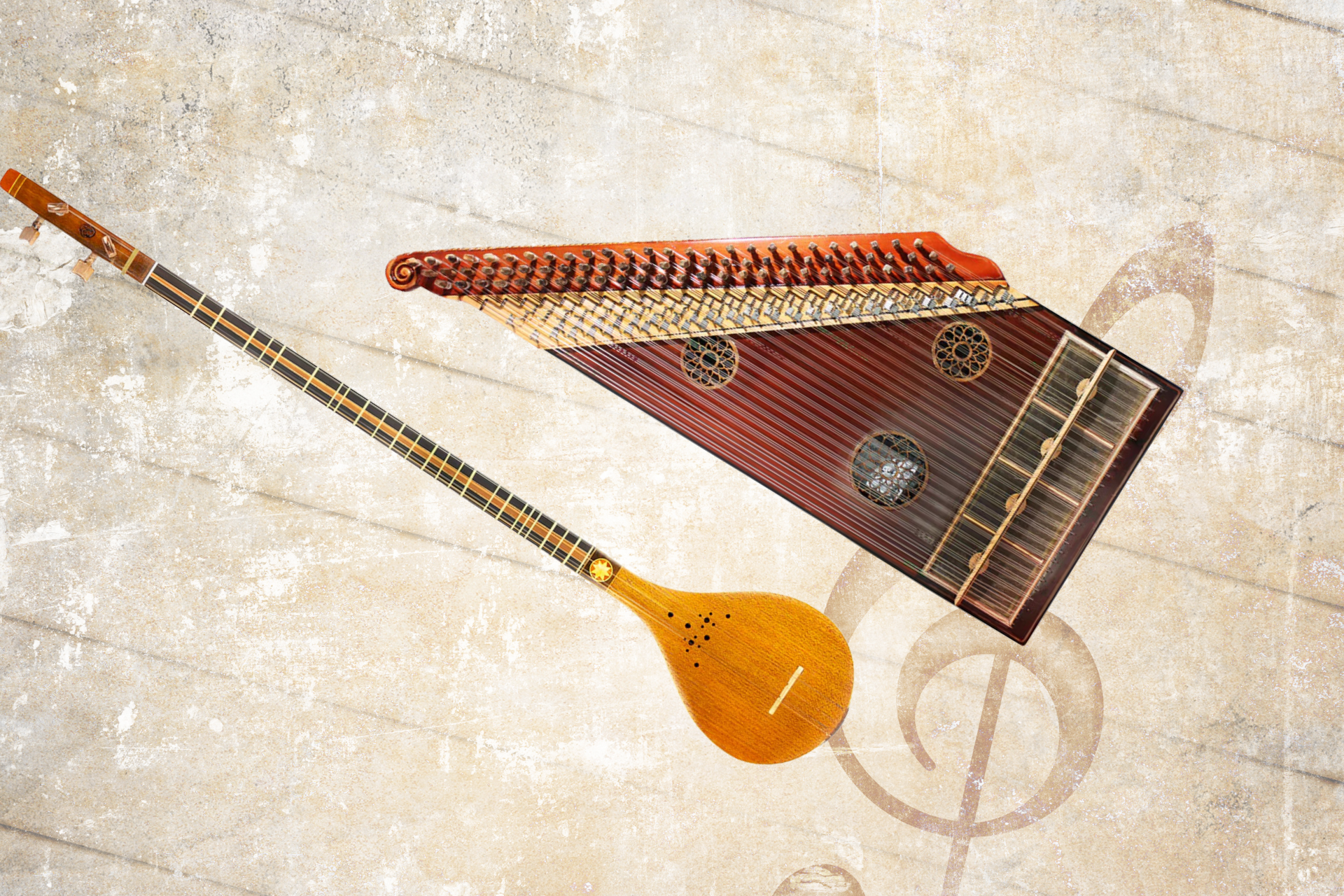General Articles
Exploring the Melodic Tapestry of Santur and Setar
In the vast realm of musical instruments, the Santur and Setar stand out as exquisite examples of traditional Persian instruments. These two stringed instruments, while distinct in their design and sound, share a rich heritage deeply rooted in Persian musical traditions.
This article will delve into the characteristics, history, and unique attributes of both the Santur and Setar, providing a comprehensive understanding of their place in the world of music.
Santur: Echoes of History
Origins and Construction
The Santur, often referred to as a hammered dulcimer, boasts a history that dates back centuries. Its origins can be traced to ancient Persia, where it was initially crafted as a court instrument for royalty. The instrument consists of a trapezoidal wooden frame with strings stretched across it, played with small, delicate hammers. The unique sound produced by the Santur is a result of the interaction between the hammers and the strings, creating a resonant, ethereal melody.
Musical Influence
The Santur has made its mark not only in Persian classical music but has transcended cultural boundaries, influencing various musical genres globally. Its versatility allows it to be seamlessly integrated into diverse musical compositions, from traditional Persian pieces to contemporary world music.
Setar: Strings of Elegance
Design and Structure
In contrast, the Setar is a long-necked lute with four strings, each serving a distinct purpose in producing its melodic tones. The instrument's design showcases the artistry of Persian craftsmanship, featuring a hollow wooden body and a slender neck. Setar players use a unique style of fingerpicking to create intricate melodies and ornamentations, showcasing the instrument's expressive potential.
Evolution through Time
The Setar has evolved over the centuries, adapting to changing musical tastes and styles. Originally crafted with three strings, it eventually gained a fourth string, enhancing its range and musical possibilities. Despite its evolution, the Setar has retained its essential character, remaining a symbol of classical Persian music.
Santur vs. Setar: A Comparative Analysis
Sound Characteristics
Santur
The Santur produces a mesmerizing, bell-like sound, characterized by its rich resonance and harmonics. The hammered dulcimer technique creates a distinctive timbre, allowing for both delicate and powerful expressions in music.
Setar
Setar, on the other hand, offers a more intimate and nuanced sound. The fingerpicking technique allows for a wide range of articulations, making it a highly expressive instrument suitable for both solo performances and ensemble playing.
Playing Techniques
Santur
Playing the Santur requires a mastery of the hammering technique, where players use two lightweight hammers to strike the strings. The player's skill lies in controlling the force and speed of the strikes, creating a dynamic and nuanced performance.
Setar
Setar players employ a combination of fingerpicking and fretting techniques. The instrument's frets are moveable, enabling players to produce microtonal intervals, a characteristic feature of Persian classical music. The result is a highly ornamented and emotionally charged musical expression.
Cultural Significance
Santur
The Santur holds a revered place in Persian culture, often associated with the refinement of the courtly arts. Its historical significance makes it an integral part of traditional Persian celebrations and ceremonies.
Setar
Setar is deeply ingrained in Persian classical music, serving as a vehicle for expressing complex emotions and poetic themes. Its presence is prominent in both classical and folk music, embodying the cultural identity of the Persian musical tradition.
Choosing Between Santur and Setar
Selecting between the Santur and Setar often boils down to personal preference and the musical context in which the instrument will be used. While the Santur offers a captivating and resonant sound suitable for a wide range of genres, the Setar's expressive capabilities and intimate tonality make it a favourite among solo performers and traditional Persian music enthusiasts.
Experience the Melody at Rhythm Music Shop
As you embark on your journey to explore the enchanting world of Santur and Setar, consider visiting Rhythm Music Shop in Markham. Our shop, conveniently serves Richmond Hill, North York, and the entire Greater Toronto Area (GTA), offers a curated selection of traditional and contemporary musical instruments, including Santurs and Setars.
Immerse yourself in the richness of Persian musical heritage and discover the perfect instrument to elevate your musical expression.

